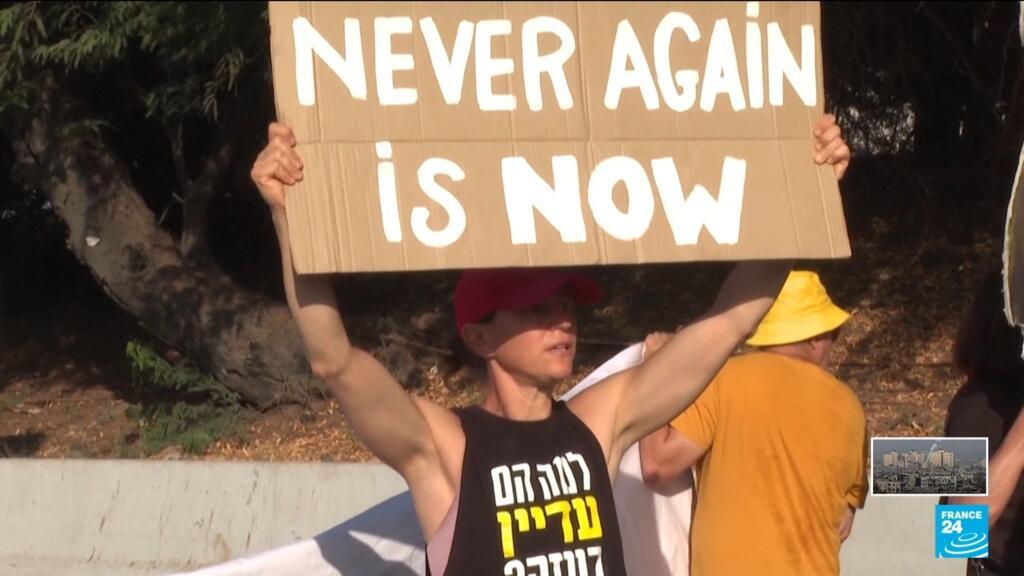Zamhal Nansamba is standing in Khitziz in front of his house, a suburb of Kampala, the capital of Uganda, is in his arms by his one -year -old son. Around it around the flies, the smell of garbage fills the air. Her flip-flops place her feet just above the floor of dirt dirt.
A year ago, on August 9, 2024, the surrounding landfill was almost buried from Nansamba’s family and her house.
The mother of two says she was very lucky: “I woke up early to do housework that morning,” she remembers.
“When I heard a noise I went out. I saw trees and nonsense.” Her lips tremble because she remembers, “I caught my two children and we ran away.”
The 31-year-old municipalities of the waste-completion above their different house indicate on a huge mountain of landfill-towing. In 2024, the ton waste dropped the slope down and buried more than 70 houses. 34 bodies were recovered, and more than 20 people are still missing. More than 220 residents were left homeless. Later, officials said that a methane explosion triggered the landslide.
That day the life of Nansamba’s family was completely changed. When she returned to see if her house was still standing, she found the building intact, but many others were destroyed and cows of cows were all dead in the neighboring meadow.
“Some people lost their property, lost their lives,” she describes DW. “Till now, we are living a sad life. We had rental apartments, and I was able to pay my children’s school fees with income from those apartments.”
Japanese help
Immediately after the disaster, the Kampala Capital City Authority (KCCA) asked to move the residents living near the landslide as the landfill could further slide. But families like Nanamba, who live in this poor neighborhood on the northern outskirts of Kampala, have no money to settle elsewhere.
The fear of another potential avalanche keeps awake at night, called Naan Samba. Her husband is going through psychiatric treatment.
“We are all painful,” she describes DW.
Immediately after the landslide, the KCCA closed the landfill in the kitzi, where all the waste from the two million-public metropolis has been piled up for more than 27 years.
City spokesperson Daniel Nuwebine reported that the Japanese government recently flew into machinery and Japanese engineers and provided $ 1 million in funding to secure landfills. The work included compressing about 500,000 tonnes of waste.
“This is a huge task. The thesis of high -risk areas where methane gas is present in the ground and can open the pressure cracks and trigger further avalanche,” says Nuwebine.
Kitty landfill is now officially closed. But where does 2,000 tonnes of garbage go that shivering produces daily?
Nuweabine says that in March, KCCA Bough 90 hectares of land, 27 km to the west of Campala, to create a new landfill.
The municipality has large plans to process the city’s waste, the spokesperson said, which included a manure project for Kryta biogas. The estimated 80% of the domestic waste is compostable byvast, as the residents of Kampala rarely use processed food. The rest can be recycled, called Nuwebine.
In early 2024, the German Chamber of Foreign Trade held a conference on circular economy and waste processing at Kampala. Companies as search as Siemens heard a plan to recycle more materials to the Ministry of Environment of Uganda. The new landfills are to become a recycling center.
Controversial land issue
But till now, the idea lacks investors and funds. According to Alden Valukamba, spokesman for the National Forestry Authority of Uganda, the waste is still being dumped in the dump, which is controversial.
“For our knowledge, it is still a forest reserve,” Valukamba tells DW. “It is located in the catchment area of the Mayanja River, which is an important contributor to Lake Victoria and its biodiversity ecosystem.”
“We found that some garbage was actually dumped,” Valukamba said.
In December 2024, when Himola went there, soldiers and police officers were on the site.
In Uganda, Parliament and the President should be approved before the forest store can be demolished for use.
“It was not done,” says Valukamba. They suspect that the city administration and previous landlords worked together “haste and illegally” to secure land sales.
The dispute has given rise to many court cases. KCCA emphasizes land near Buyala, where garbage is now being dumped, belonging to two private individuals, from whom KCCA legally acquired land in March.
A court ordered an inquiry as to what the reserve is. KCCA spokesman Nuwebine told DW: “The report found that the land is not part of the forest reserve in the question.”
Landslide victims in Kiteziz stopped everything, still waiting for compensation to allow them to be safe somewhere.
Nuwebine told DW that recently a cabinet meeting drafted a memorandum, and an order was issued to the Ministry of Finance to pay the victims.
“People will be compensated,” he told DW.
This article was the original published in German.


